Rust Never Sleeps
Craig Olson reviews "superusted," the Soap Factory's fourth Midwest Biennial, curated this time by Cheryl Wilgren Clyne and which brings together work from 17 artists selected after more than 100 studio visits in the region.
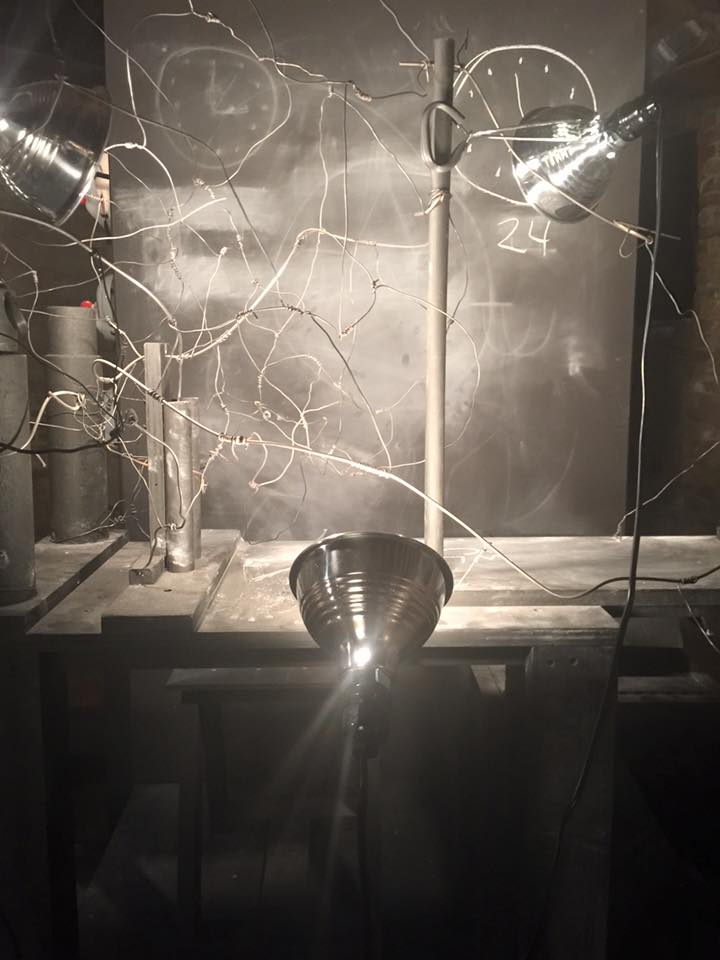
Herons in the tideflats
Have no thought for
States of Cars
—I’m sick of car exhaust
Gary Snyder, from Night Highway 99
Everything that breathes is hungry, and rust never sleeps. This is the larger vista. It is where we can step outside of our delusions, rising like a heron out of the pain and suffering over what we’ve done to the natural world. It is a view that, despite our guilt and self-blame, acknowledges the simultaneous hurt and beauty of this complexly interrelated planet. Instead of turning us away, it calls us to practice.
That is exactly what is on display in superusted (pronounced super-rusted) the Soap Factory’s fourth Midwest biennial. We are given an opportunity to see the efforts and practice of 17 artists from five states across the Midwest — Illinois, Iowa, Minnesota, North Dakota, and Wisconsin. Curated by Cheryl Wilgren Clyne after a series of over 100 studio visits (no small feat), this diverse grouping includes both artists with established reputations and some fresh out of school. To her credit, Wilgren Clyne states in the press release, “There may be a series of conceptual threads that run throughout the works: perhaps each informs the other? Rather than overstate what that might be, the intent is to allow the viewer to find their own themes.” This is a generous and welcome perspective. Wilgren Clyne is an artist herself, something more and more rare in a curator. Curatorial studies now seems to be a field increasingly polluted with didactic pretensions and interior design sensibilities, practiced by effete academics who couldn’t find a hammer in a bag of nails, let alone use it. Perhaps that’s why this exhibition, which goes against the grain of those conceits, has such an immediate and tactile sensibility.
The Soap Factory in Minneapolis, a 134 year-old wood and brick warehouse turned alternative arts space, is the perfect setting for such a tactile sensibility. The character of the building permeates the exhibition, with its corrosion, raw bricks, cement, and steel; the history of an industrial past is never out of sight or mind. It runs a parallel thread to the artwork it houses, extending a metaphor reflected throughout the exhibition — the inevitability of deterioration and the challenges of living and creating in an increasingly defiled world. As many of the artworks make clear, their chief weapons against these forces are imagination and daring and, together, they create a space within a space, encapsulated by diverse styles of being and doing.
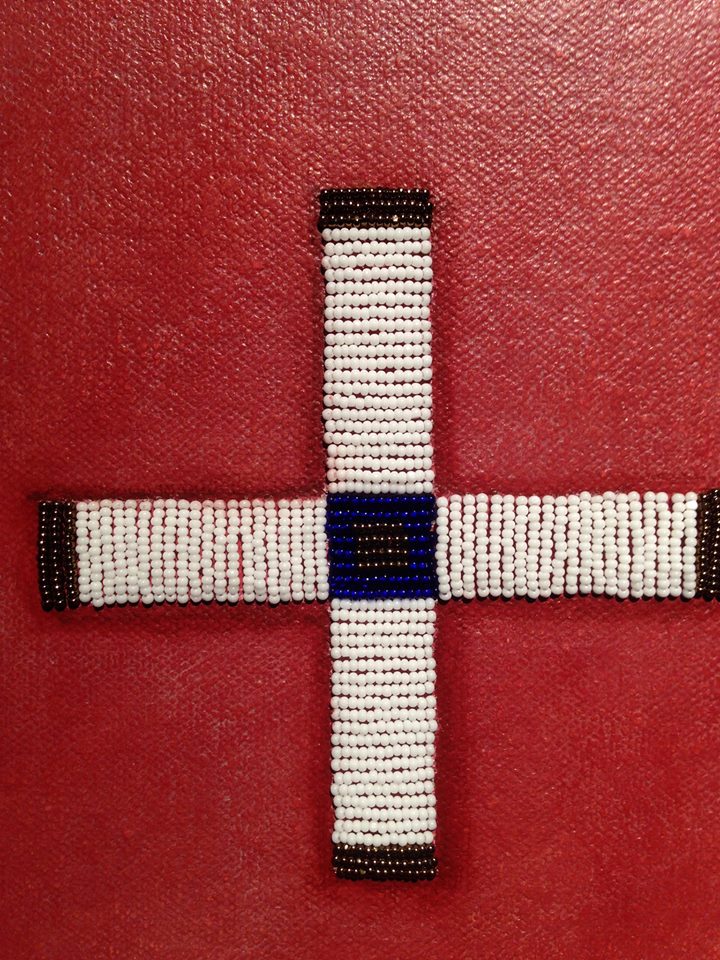
An artist who is no stranger to these difficult forces is Dyani White Hawk Polk. With her painting Connections (2015), she offers some necessary medicine for traversing the tangled mess of here and now. It hangs in the first gallery of the building, adjacent to an opening that leads deeper into the rest of the exhibition. This architectural reality is echoed in the image itself: a painting of two moccasins (a regular theme in the artists work), side-by-side and slightly overlapping, the left red and white, the right blue and white. Each moccasin contains a painted opening, as if the material of the shoe were itself rolled back, revealing a deep umber void. Above each void the artist has adorned the canvas with traditional symbols done skillfully in beads and thread sewn directly onto the canvas. The left, red moccasin contains two crosses, while the right, blue moccasin contains two double crosses, or the traditional Lakota symbol of the dragonfly. To enter these voids, to step into the shoes, is to enter an image of artistic vitality. It is vitality fed by movement and cyclical changes offering protection from the vulnerabilities of time and obsolescence.
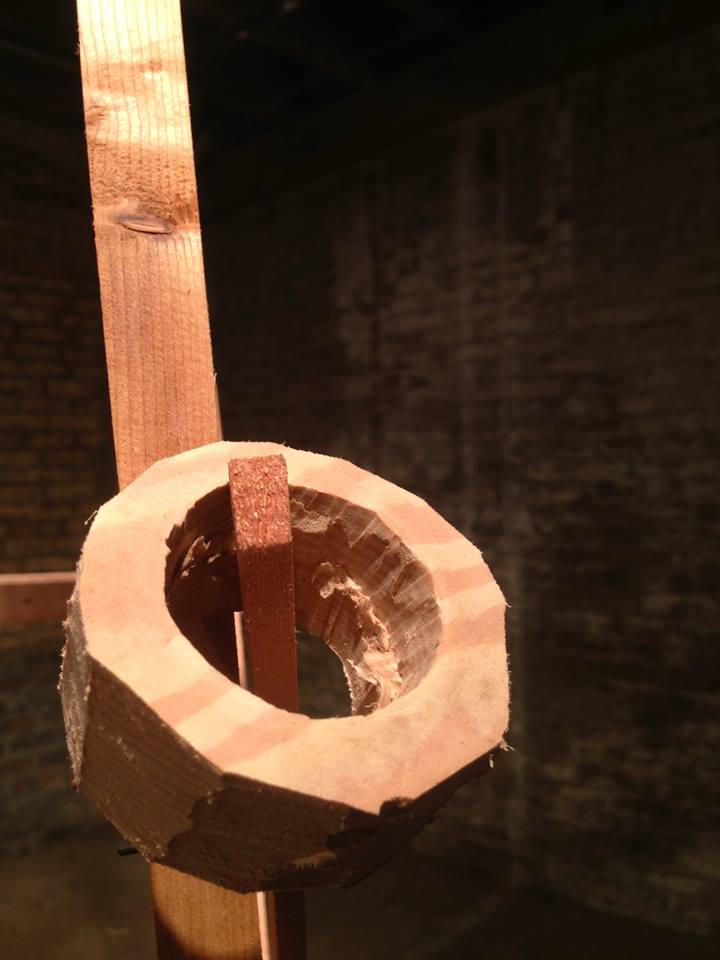
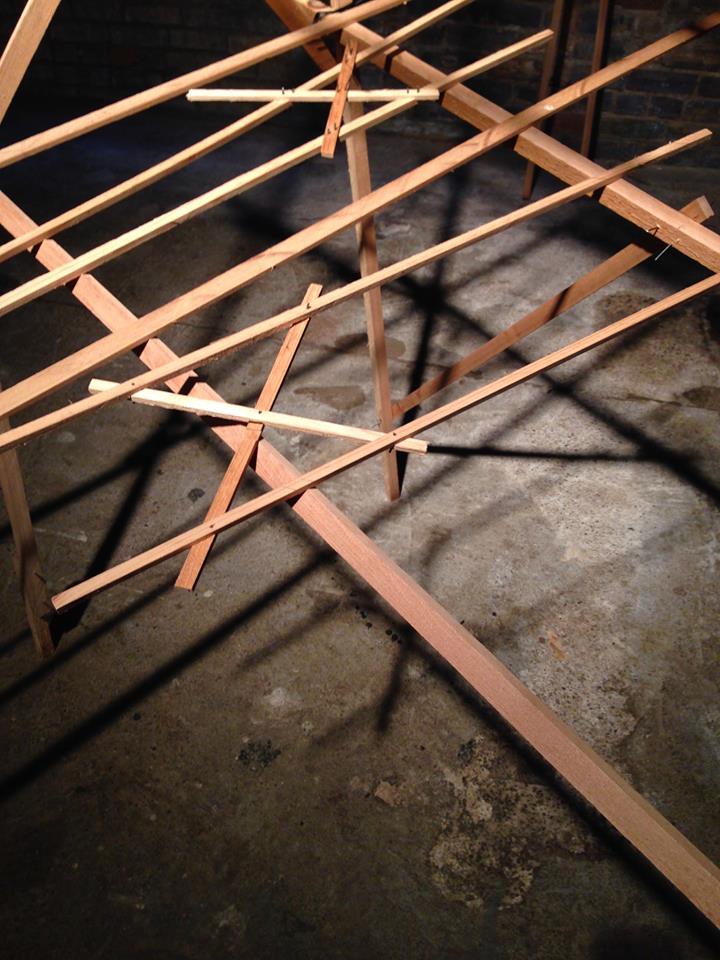
To be sure, we are vulnerable. The biological health of the planet is in trouble. Many larger animals are in danger of becoming extinct. Dentists kill lions in Africa in order to live out their personal fantasies of power and control. Meanwhile, entire ecosystems of little living creatures are being eliminated. Wisconsin artist Carlos DeGroot’s sculpture, Untitled (2015), is a compelling assemblage that awkwardly rises out of the gloom surrounding these issues. A thin, ungainly wooden scaffold ultimately supports a large plastic sack filled with mulch; a small humidifier on the ground is connected to the plastic sack via a long tube, feeding the microclimate with moisture. Small, green, living buds of plants are sprouting within: an animate system of futility and decay, generation and corruption. It is use made literal — value reworked, translating metaphor into the life of a body, into insight and engagement.
Inversely, far in the back of the exhibition are 13 small images by Alexa Horochowski that translate use into virtual value. Each is a small sheet of metal laid out on a long wooden shelf. On the surface of each metal sheet is what appears to be spontaneous yet deliberate scratching. Non-objective and mysterious, they seem as if handmade with intense concentration and effort, but they’re actually ink-jet prints. The images you see aren’t scratched into the surface of the material at all, but rather are made by the application of a computer-generated design to a metal sheet. They are, in that sense, virtually handmade. Nonetheless intriguing, these virtual images reconcile the sort of living we now do with hampered forces: physical, tactile activity curtailed and lamed under the bells and whistles of new media. The image of activity we see in her work is separated from its inner force, its wildness, and so turned from living force into virtual activity, an image conceived as an exercise in propriety. An apt metaphor for our times.
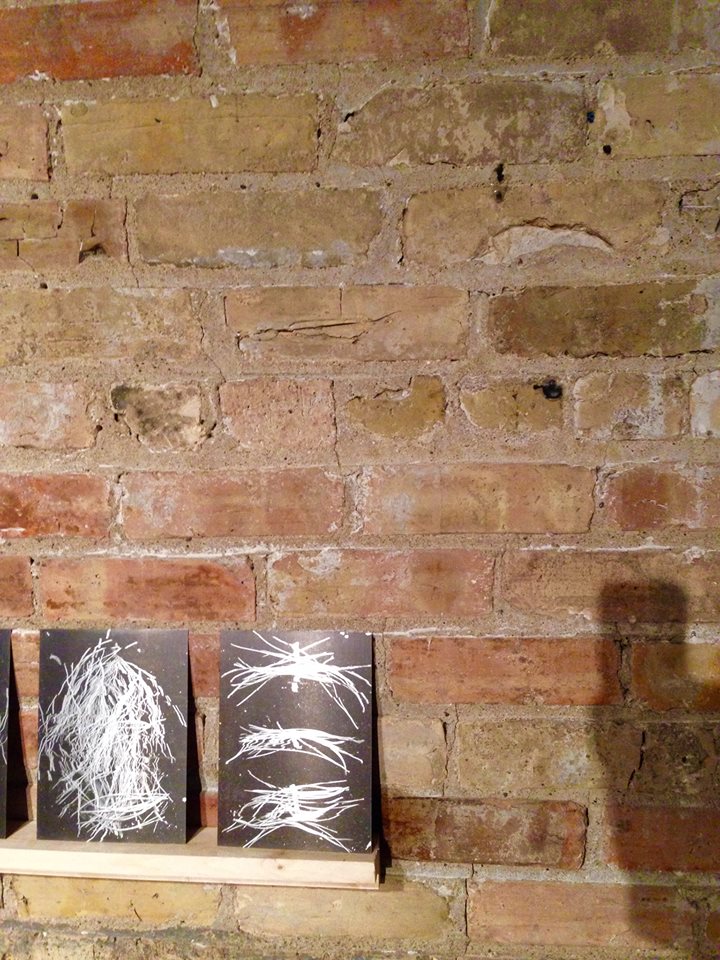
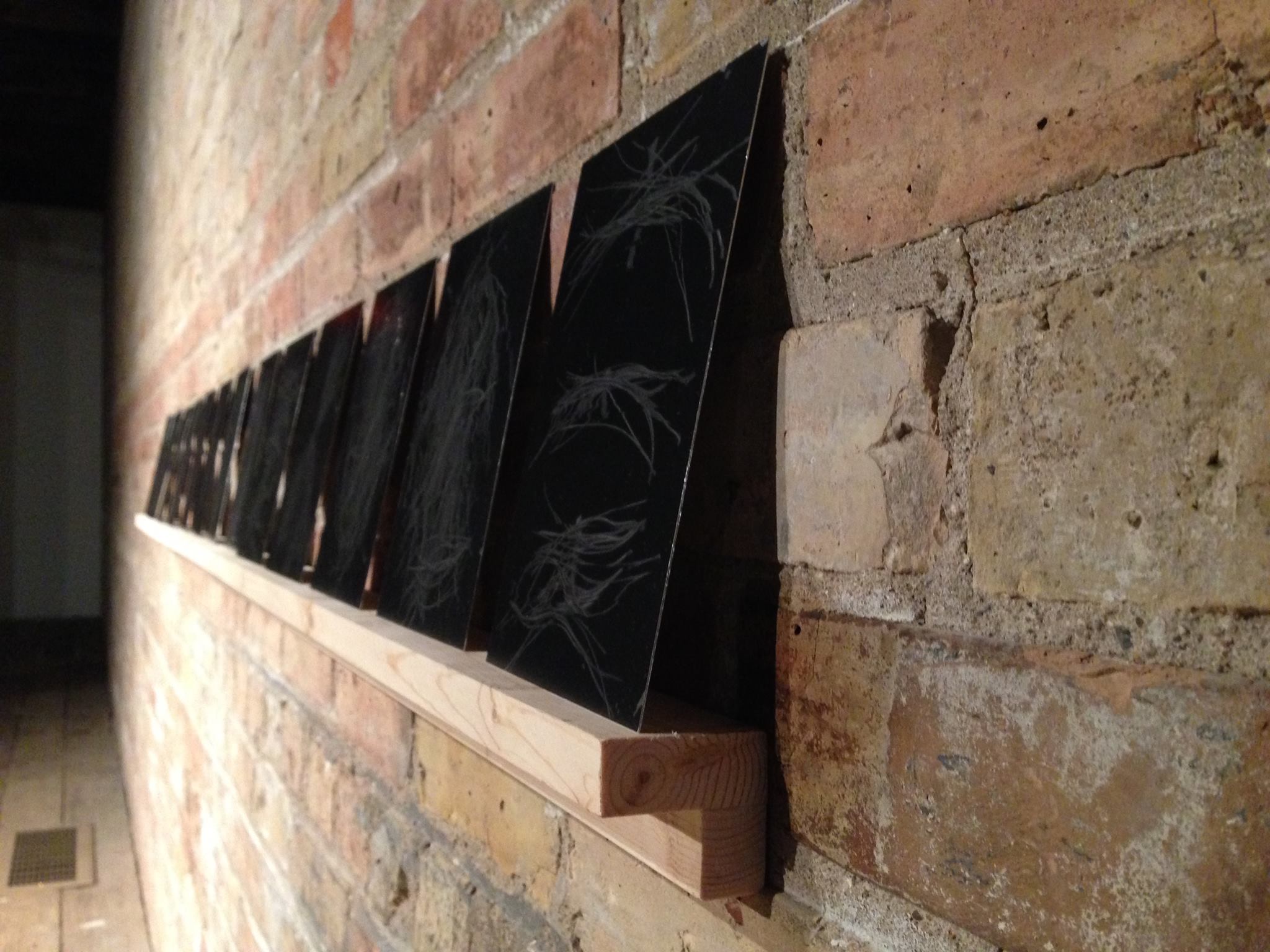
There are many artists in this exhibition whom I haven’t mentioned, but don’t count on me to expound. As the curator explains, “the intent is to allow the viewer to find their own themes.” You should see this exhibition and feel your way through. There is something stirring around within it that feels necessary and relevant. In a strange and serendipitous way, the artworks here demonstrate the complexities of interconnectedness in all its tangled contradictions. Remove one element and the whole exhibition may fall apart.
Together, the artworks don’t speak to the single-vision notion of everything as “one.” Instead, they demonstrate the “many” as authentic, each helping to illuminate the others. As Marie Louise Van Franz stated, “the biggest mistake you can make is to assume everyone is just like you.” It’s with a larger view that we can see the relentless onslaught of time, that ultimate innovator who holds all our destinies in its grip.
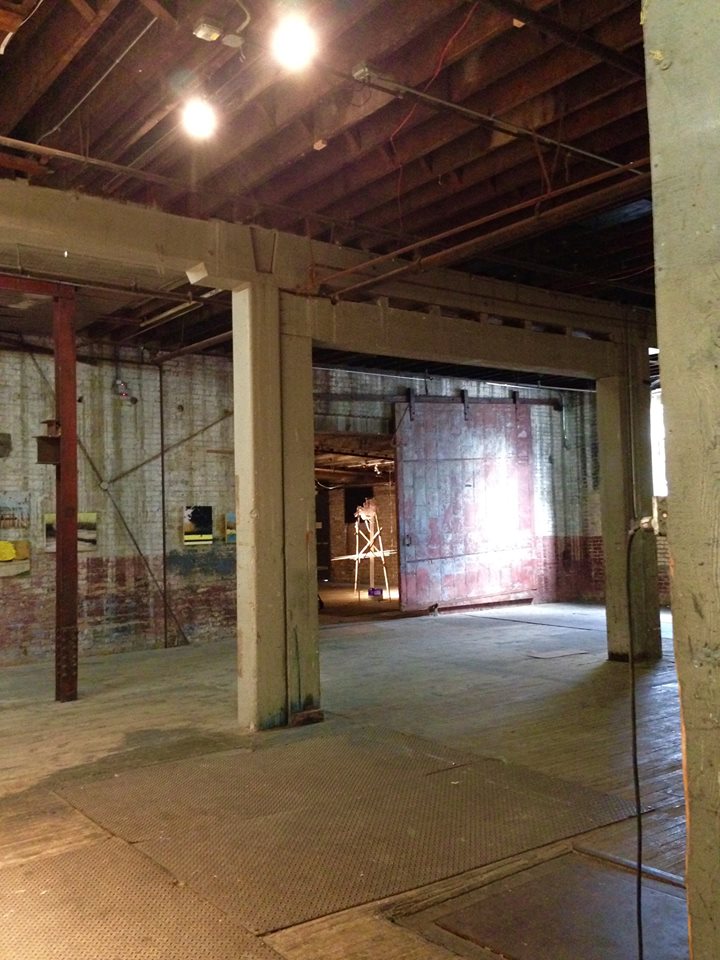
Related exhibition information:
superusted the fourth Midwest Biennial is on view at The Soap Factory through November 8. There is an artist talk scheduled in the gallery, featuring conversations with five featured artists, on October 20, 6 pm.
Craig Olson is an artist and writer living in Minnesota.